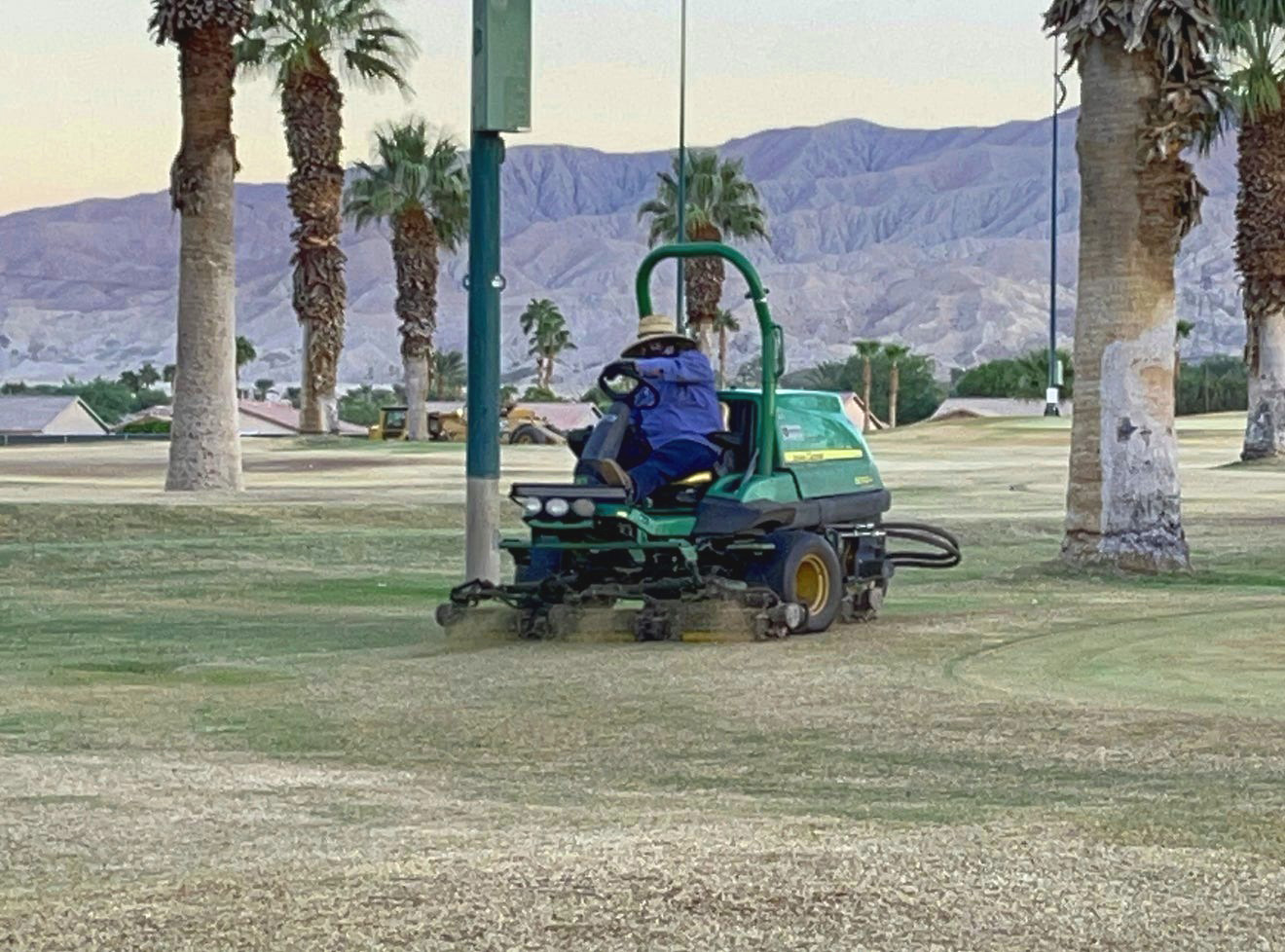PALM DESERT, Calif. — Like most residents of the Coachella Valley, Nick Leitner is amazed by the weather in the Coachella Valley the last few weeks.
“These temperatures have just been insane to the point where I’ve been here close to seven years now and I’ve never seen Oct. 1 at 115 degrees,” said Leitner, directory of agronomy at the 36-hole Indian Wells Golf Resort.
Leitner’s interest in the unseasonable heat is different than most people in the desert who are complaining about temperatures over 110 degrees in October. With October the traditional month for overseeding golf courses and other landscaping in the Coachella Valley, Leitner’s concern is getting cool-weather rye grass to germinate and stay alive in the high temperatures.
“It’s just taking as many precautions as we can. The use of fungicides and phosphite to be able to combat for disease because when you have water and heat, diseases are really present, and it can go and wipe out that cool weather grass in a matter of minutes,” Leitner said.
What is overseeding?
Overseeding is the process of transitioning from warm-weather grasses like Bermuda grass to cool-weather grasses like rye or bluegrass. Bermuda turns dormant and brown in the winter temperatures in the desert, but the triple-digit heat of the summer kills the cool-weather grasses. To keep courses green, they must overseed in the fall. In the spring, the rye grass dies off naturally and the perennial Bermuda springs back to life.
October is the transition month because temperatures, particularly at nighttime, make it possible for rye grass to germinate. At the Indian Wells Golf Resort, with two courses, Leitner and his crew have already overseeded the Celebrity Course, but the heat has caused concern about how effective the overseed will be.
“I’ve already got germination out there, which is fantastic. Now it’s just trying to move ahead,” Leitner said. “The ideal nighttime temperatures that I am looking for are between 65 and 70 degrees. That is ideal. So we have germination, now it’s just trying to manage it to the point where the rye grass doesn’t start melting out because of how hot it is or that the Bermuda grass doesn’t take it over.”
Those nighttime temperatures haven’t been seen in the Coachella Valley this fall.
“Dating back to the 21st of September, the Palm Springs area has not had a low below 70,” said Kyle Wheeler, a meteorologist with the National Weather Service in San Diego. “There actually was a brief period when it was in the 60s, but that was a couple of days in the middle of September. But since then, it has been much higher.”
One way to combat the heat is with water, but overwatering the grass to keep it cool can lead to the threat of disease, Leitner said.
“Water management, making sure that you are not throwing too much water to the point where you can cause disease, or it becomes oversaturated,” Leitner said. “The seed won’t germinate during that.”
Even if the seed does germinate, the heat forces Leitner and his staff to take extra precautions on some areas of the course.
“You are focusing on a lot of your south-facing slopes, hot spots that you have to be able to make sure that seed is getting enough water. So it is a balancing act,” Leitner said. “From that point, just kind of hoping and praying that temperatures will start dropping, and whatever misses you have or the seed didn’t germinate, we’ve got to come back in and fix that after the fact.”
At Indian Wells Golf Resort, like other golf facilities that have multiple golf courses, the overseeding schedule is staggered so that one golf course is always available for play. So while the Celebrity Course was being overseeded, the Players Course remained open for public play and the Epson Tour Championship that ended Sunday. The Celebrity Course re-opened last week, while the Players Course closed on Sunday.
“I’ve been monitoring the 10-day (forecast) for the last month and next week when we go to shut down the Players, temperatures look like they are going to start being ideal,” Leitner said.

